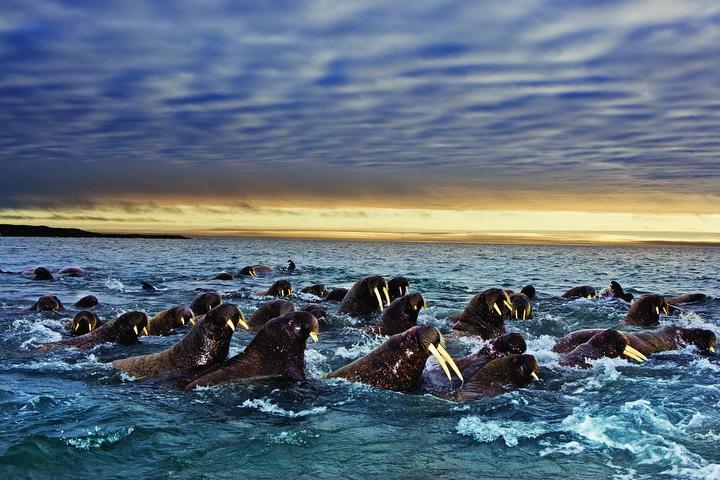The largest production in National Geographic history, including never-before-photographed animal behaviors and in-depth documentation of mass movements rarely seen in the animal kingdom * The Great Migration premieres in fall 2010

The National Geographic Channel gives the word "move" a whole new meaning. This 7-part series takes viewers around the world on the grueling journeys of millions of animals, who do it to ensure their survival. The series was filmed from the ground, from the air, from treetops and cliff tops, on ice surfaces and underwater. Strong stories of many species and their movements, will be accompanied by new scientific discoveries and breathtaking photographs in HD technology. The beauty of these stories is emphasized by focusing on the fragile existence of animals and their journey to survive in a changing world.
The series team spent two and a half years in the field, traveled 670,000 km in 20 countries and all continents, all to bring this production to the television screen. Length of the series - 7 hours. The premiere of the series will be broadcast in the fall at the same time in 166 countries and 34 languages.
4 hours of animal migration stories and additional hours including a special on scientific research dealing with migration, a behind-the-scenes special that tells about the advanced technology, the dramatic challenges and the passion needed to achieve and photograph the spectacular events. In addition to this, an hour of a concert that includes spectacular photographs arranged to the sounds of the original music.
The series reveals new scientific discoveries, previously unrecorded animal behaviors, and footage showing the vast array of animal migrations, including zebras from Botswana, elephants from Mali, red crabs from Christmas Island, flying foxes in Australia, an army of ants in Costa Rica and a great white shark . The series also accompanies the microscopic plankton in the ocean, the migration of the jellyfish, and there is also documentation of connecting radio transmitters to the royal butterflies and elephant seals, in order to learn about their migration behavior. It's an opportunity for viewers to be inspired and think about what it really means to move like our lives depended on it.

The footage reveals the animals' behaviors in detail, including a dramatic moment when a herd of Malian elephants crosses the "Elephant Gate" in West Africa and the monarch butterflies fly when attached to a tiny transmitter. Off the coast of Guadeloupe Island, we see the rare behavior of a great white shark preying on a seal. We will also see rare footage of a male zebra trying to pick up an orphaned foal. A very large number of antelope - Kob in Sudan, which are photographed for the first time after 20 years, and a crisis in the arctic seahorse facing a change in the weather.
For the purpose of this project, the best nature photographers were gathered, who received the best technological equipment available, to bring incredible stories of survival and dramas to life or death.
Original music was written for the series by film and television composer Anton Sanko.

One response
The description of the series is exciting in itself.
It seems really not to be missed.